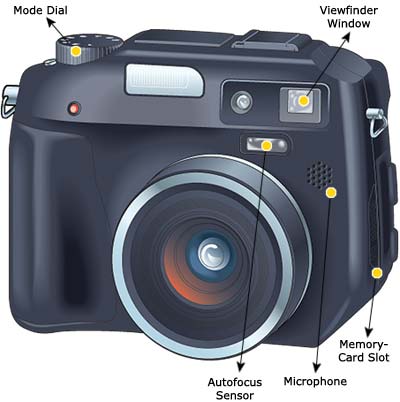聽•聽 Digital cameras are much more battery-dependent than their film brethren. That means you’ll have to recharge or replace the batteries more often, especially in cold weather. You may want to keep an extra charged up and at the ready. Deep in the field for weeks? Buy a camera that takes AA’s as well, then stock up on the lithium variety—they’re costly, but last longer.
聽•聽 The memory card—a storage chip somewhere between half the size of a postage stamp and the size of a quarter—is the digital equivalent of film. Ask yourself how many images you’ll need to store between uploading sessions—a 256-megabyte card, for instance (about $50 to $100, depending on the type), holds roughly 150 to 200 medium-resolution photos. Also, be sure to confirm what kind of card your camera takes—there are several, mostly incompatible, formats. The cheapest is Compact Flash; the priciest, xD.
聽•聽 Digital-camera shoppers latch onto one number—the camera’s resolution power, as measured in megapixels. If you plan to publish your photos or make large prints, you’ll want a powerful four- or five-megapixel unit. Just e-mailing friends or sticking ’em up on the Web? Two or three megapixels will do the job.
聽•聽 Lens quality is another important consideration. Look for an f-stop of 2.8 as an indicator of quality. An average lens spells so-so shots, regardless of the camera’s resolution power.
聽•聽 No printer? No worries. A four-by-six print runs about 50 cents from an online photo lab like Shutterfly.com or Ofoto.com. Upload JPEGs to the site and the mailman will show up with your pictures a few days later. Nifty.
Cameras Explained
Meet this year's model: tack-sharp digital pictures, cheap storage, and painless printing.

New perk: Easily find new routes and hidden gems, upcoming running events, and more near you. Your weekly Local Running Newsletter has everything you need to lace up! .
